Categories
Simulator systems
Light simulator Superb
This arrangement represents an intermediate step between the virtual conception and a usage of a real car body. It comprises advantages of both of these approaches. For example it is much more convenient for the implementation of so called “in-car dynamics”, which force the driver percept the driving experience more realistically.
The simulation engine of the car is connected with the car parts via the CAN bus. Connection into CAN is bidirectional; functional parts are the speed and RPM needles (plus other information on a central display), a steering wheel, a gear shifter, a throttle and other pushbuttons and handles.
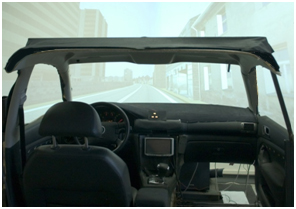
Full simulator Superb
This version is most close to the reality concerning the driver’s ergonomics because it uses a complete real car body (see our compact simulators illustrated on the Fig.). The tested person sits in a real cockpit and the virtual scenery is projected on the screen walls in front of the car hood and/or around the car depending on the particular design. Results from measurements using such a device should not be loaded with an error caused by the difference between a simulator and a real car cockpit. On the other hand this setup is rigid and very hard to reconfigure (for example when the experiments require several different configurations of function buttons handlers and/or dashboard instruments).
The compact simulator provides the driver with restricted field of view (in comparison with light simulator). It is possible to take advantage from this fact when planning a surround screen projection. The critical boundary part is cleverly occluded with A and B columns.
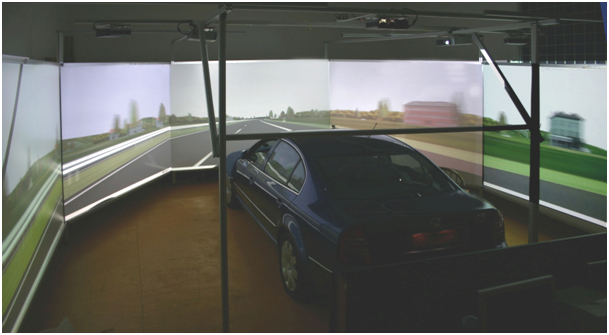
Full simulator Octavia II
The compact (or full-bodied) simulator is based on the compact middle class car Skoda Octavia II, equipped with an automatic gearbox. The projection screen of the simulator is cylindrical, covering about 210° (horizontally) of the driver’s frontal field of view. The image in all three mirrors is reflected from a planar projection screen staying behind the car body. The tested driver is surrounded by an almost complete, all-around image of virtual reality. Such an arrangement maximizes immersion into the testing scenarios and consequently the validity of the measured data.
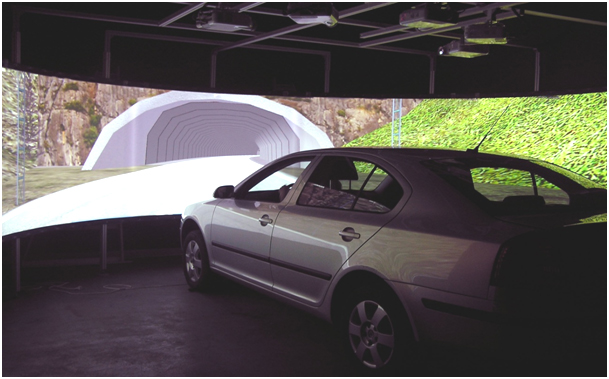
3D light simulator Octavia II
The latest simulator is our flagship. It is based on cockpit of Octavia II. It offers cave-like projection system. The light version of the simulator is based inner cockpit parts cut just behind the driver seat. The cockpit is fully equipped like normal car (including roof, mirrors, co-driver seat, etc.). The simulator system will be placed on specially designed 3 DOF moving platform (is onlz waiting for instalation).
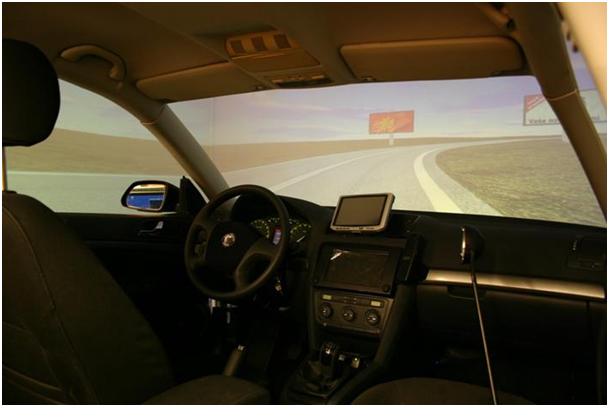
PC simulator
The very first arrangement of our simulation device used a common PC steering wheel with two pedals with a sequential gear shifter (or automatic shifting was applied). Now we use a special three pedal system (including a possibility of involvement of the clutch if required) and an H-pattern gear shifter. The realistic three-dimensional cockpit lets the driver to immerse himself into the projected scene.
In the picture there is depicted our very first approach to the driving simulation technology. The experimenting driver uses a big TV screen and common game steering wheel and pedals.
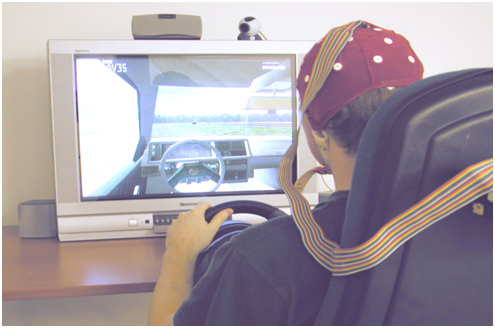
The DSRG design: 2011